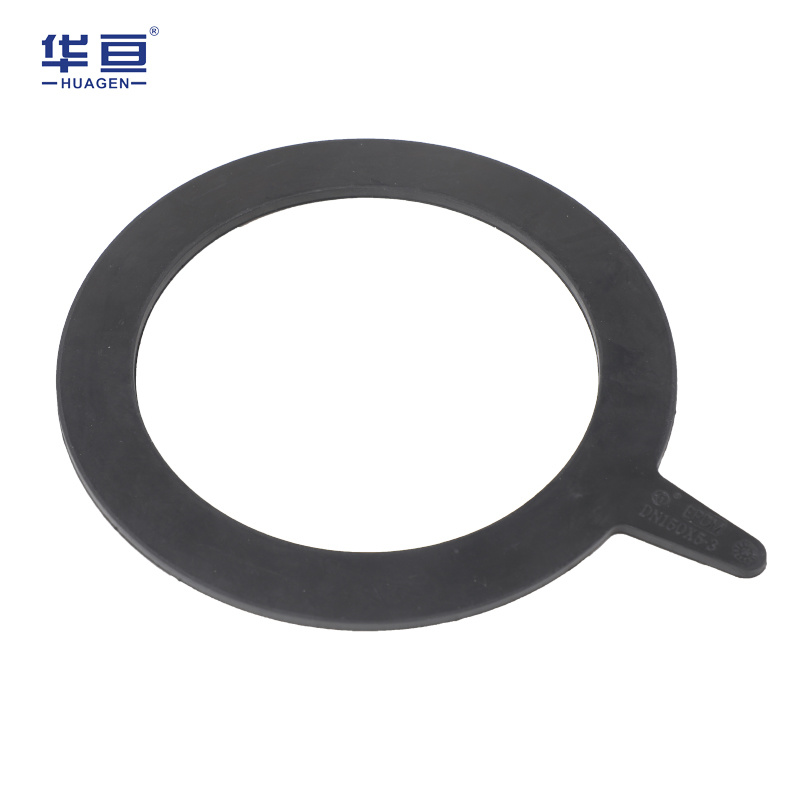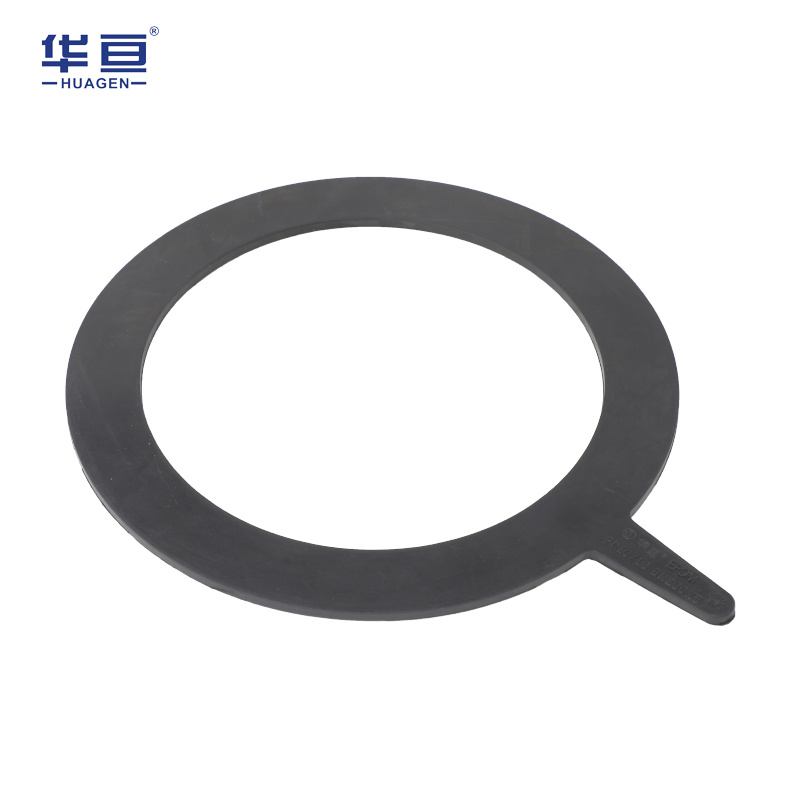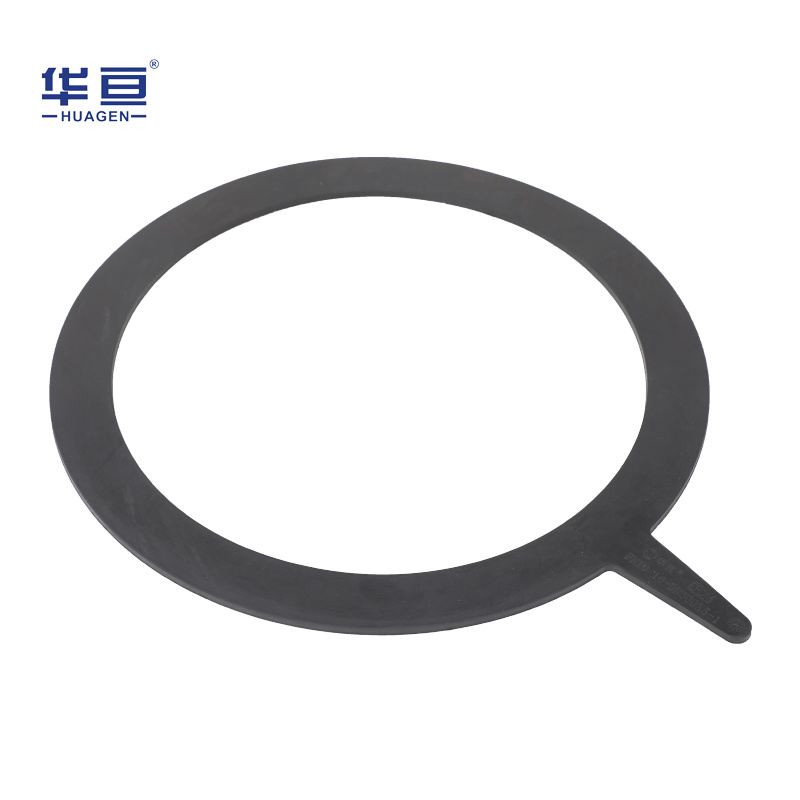







Rubber seal flange gasket DN100X5
Support Customized Processing
Flange rubber pad is an integrated circular member, its size and deviation meet and meet the national standard GB/T9119-2010 and "solid rubber products molding, pressing dimensional tolerance" (GB/T3672-M3) requirements.
MOQ:
1000
- Commodity name: Rubber seal flange gasket DN100X5
Support:
hgxs@hbhuagen.com
- Product Description
-
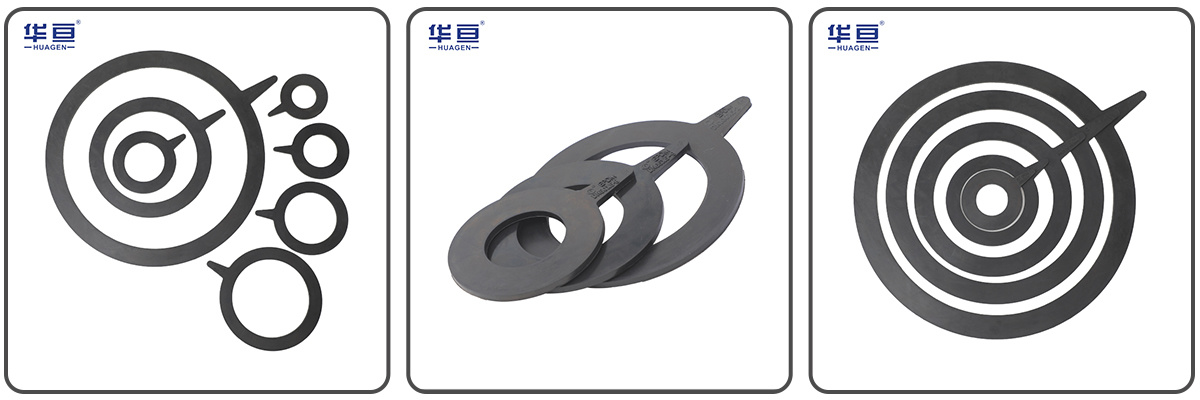
1. Flange rubber gasket is an integrally formed circular part, and its size and deviation meet and meet the requirements of national standard GB/T9119-2010 and "mold and pressure" dimensional tolerance (GB/T3672-M3) of solid rubber products.
2. The flange rubber gasket should be free of bubbles and surface defects that affect its performance, and the bonding edge at the mold joint should be kept at a reasonable minimum.
3. The rubber, accelerator, antioxidant and vulcanizing agent used in the flange rubber gasket shall be non-polluting materials, and the sanitary performance of the flange rubber gasket shall be improved, which shall conform to the provisions of the Safety Evaluation Standard for Drinking Water Transmission and Distribution Equipment and Protective Materials (GB/T 17219-1998).
4. The physical properties of flange rubber sealing gaskets shall meet the requirements of "Specification for Rubber Seals Interface Sealing Ring Materials for Water Supply, Drainage and Sewage Pipelines" (GB/T21873)-2008. 100% of the rubber used to make EPDM flange rubber gaskets is pure EPDM rubber, and it is not allowed to use or mix ordinary rubber and recycled rubber.
5. The marking, packaging, transportation and storage of flange rubber gaskets should comply with the general provisions of rubber sealing products, packaging, transportation and storage (GB/T5721-93).
Product Parameters
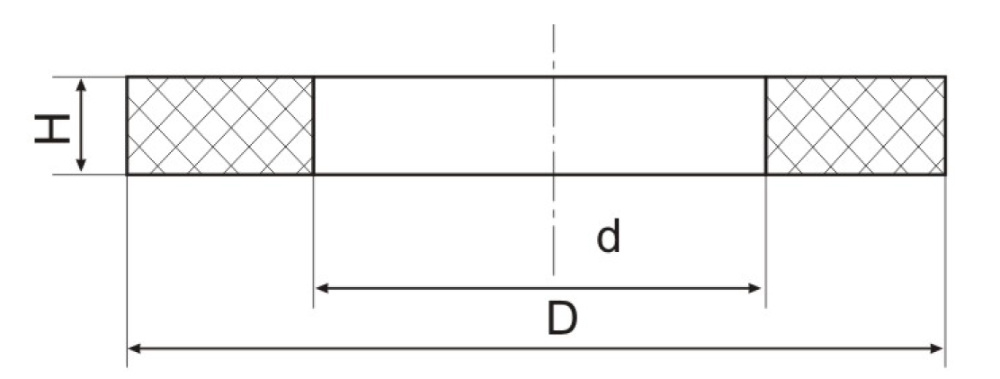
Specifications D d h Net weight (kg) PN10 PN16 PN10 PN16 DN80 132-2.0 132-2.0 80 2.0 3 0.5-0.3 0.037 0.037 DN100 156-2.0 156-2.0 100 2.0 3 0.5-0.3 0.051 0.051 DN150 211-2.0 211-2.0 150 2.0 3 0.5-0.3 0.068 0.068 DN200 266-2.0 266-2.0 200 2.0 3 0.5-0.3 0.127 0.127 DN250 319-3.0 319-3.0 250 3.0 3 0.5-0.3 0.148 0.148 DN300 370-3.0 370-3.0 300 3.0 4 0.5-0.3 0.200 0.200 DN350 429-3.0 429-3.0 350 3.0 4 0.5-0.3 0.250 0.250 DN400 480-3.0 480-3.0 400 3.0 4 0.5-0.3 0.289 0.289 DN450 530-3.0 530-3.0 450 3.0 4 0.5-0.3 0.314 0.416 DN500 582-4.0 582-4.0 500 3.0 4 0.5-0.3 0.460 0.529 DN600 682-4.0 682-4.0 600 3.0 5 0.5-0.3 0.552 0.847 DN700 794-4.0 794-4.0 700 3.0 5 0.5-0.3 0.652 0.652 DN800 901-4.0 901-4.0 800 3.0 5 0.5-0.3 0.913 0.913 DN900 1001-5.0 1001-5.0 900 3.0 5 0.5-0.3 1.003 1.003 DN1000 1112-5.0 1112-5.0 1000 3.0 5 0.5-0.3 1.338 1.338 DN1100 1218-6.0 1218-6.0 1100 3.0 5 0.5-0.3 1.475 1.475 DN1200 1328-6.0 1328-6.0 1200 3.0 5 0.5-0.3 1.500 1.500
Production Workshop
Company development direction: Strive to become a leader in specialized manufacturing and technological innovation of sealing products for water and thermal pipelines in the pipeline interface sealing industry.

Production Process
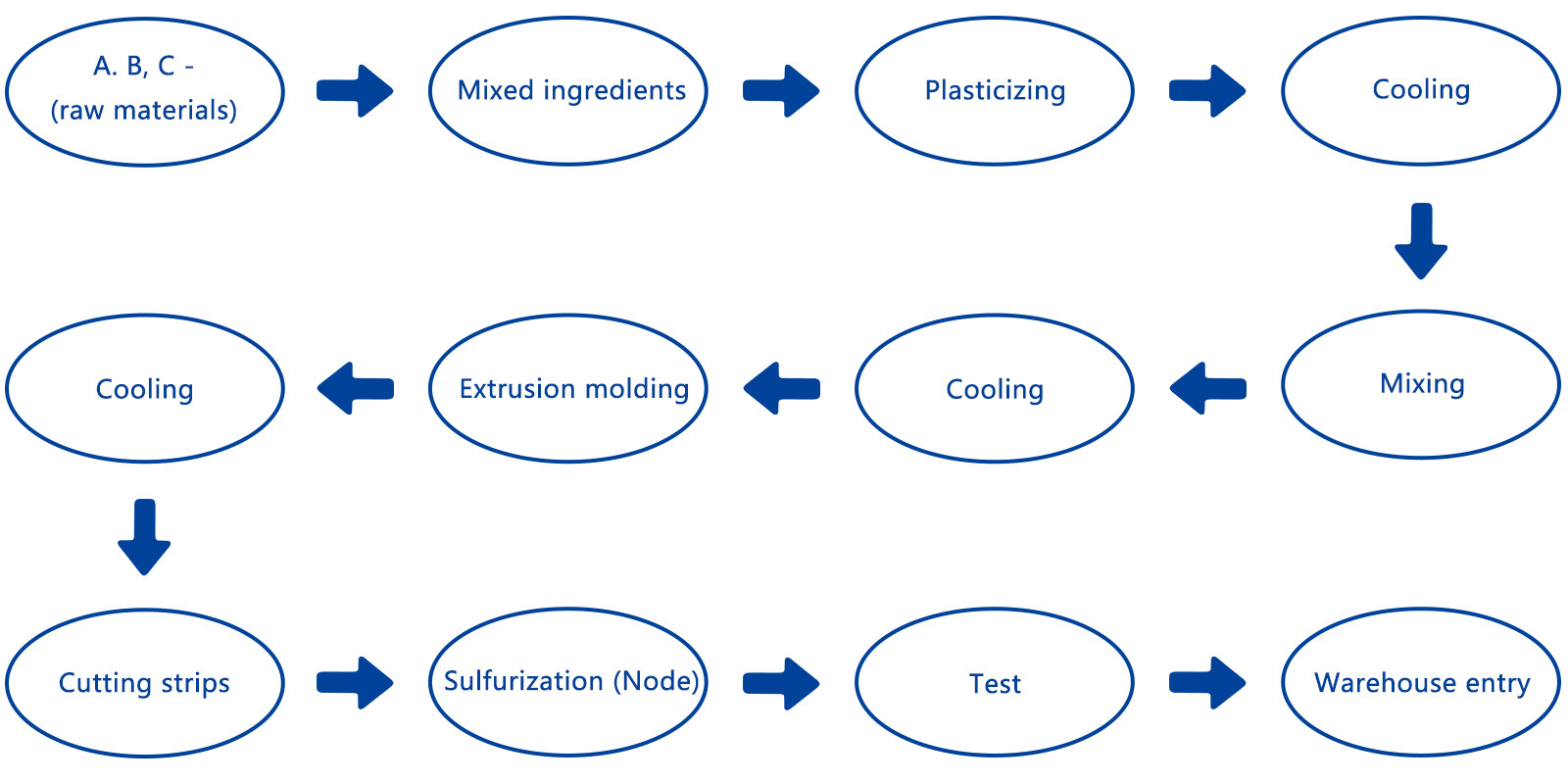
Qualification Certificate
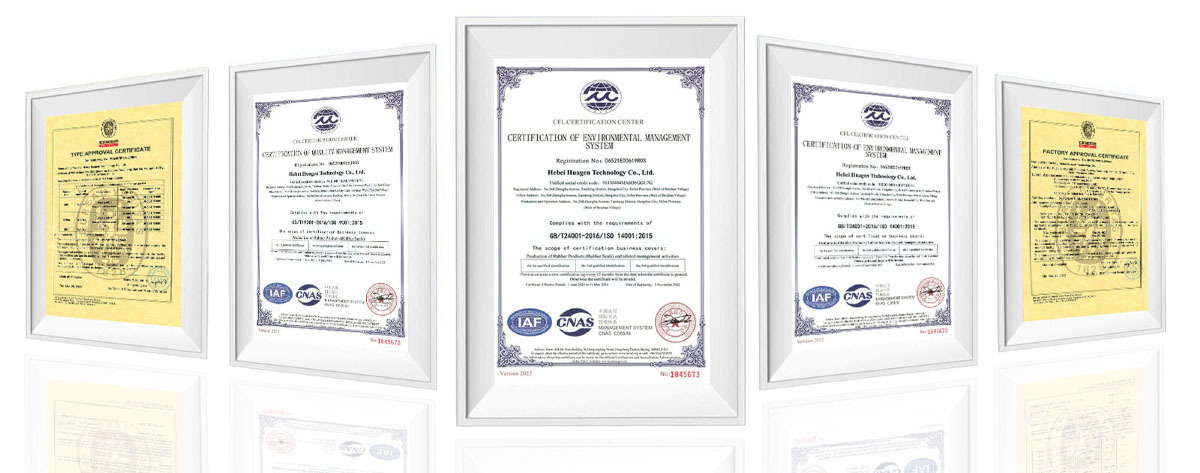
Buyer Reviews
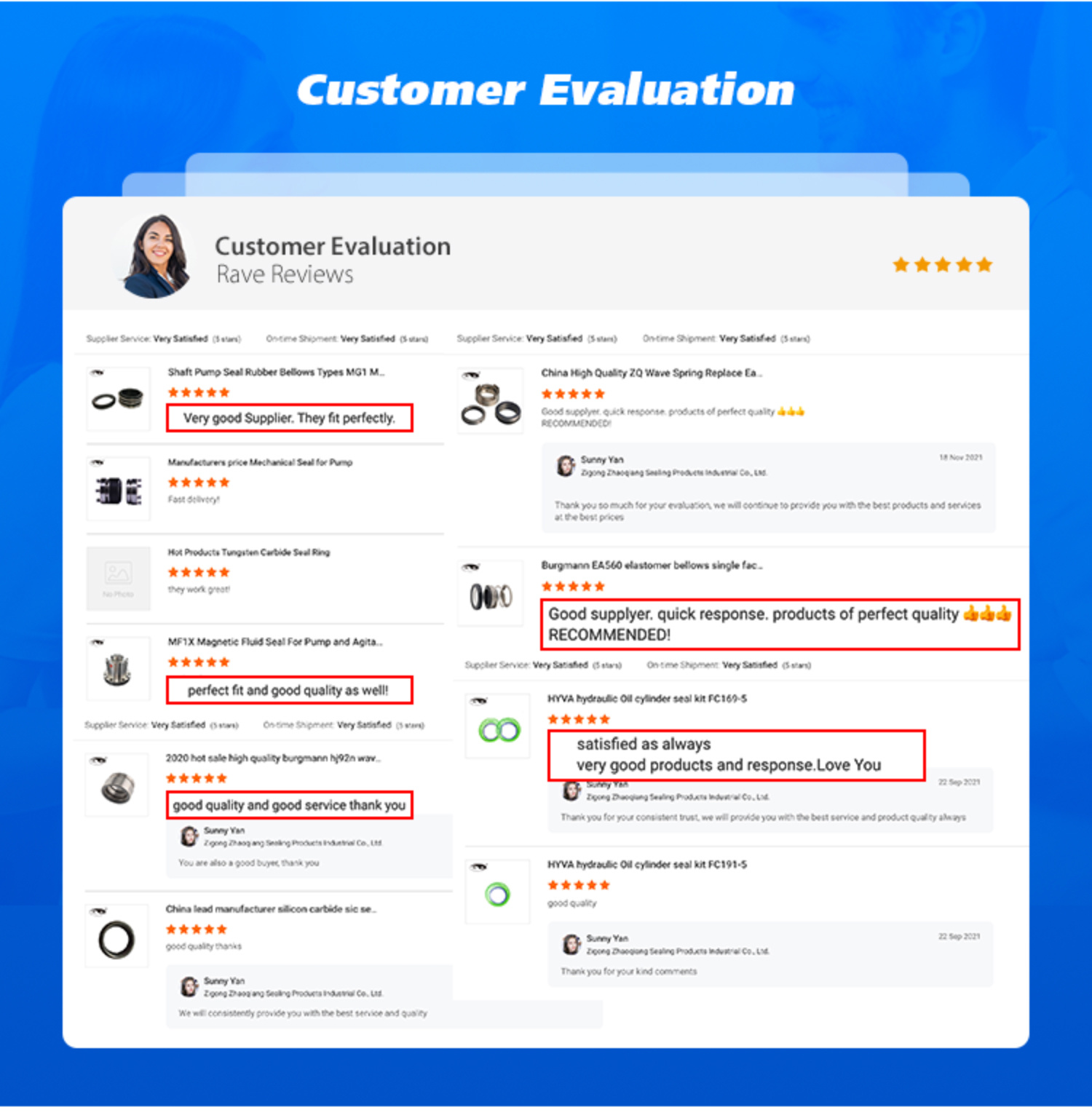

Engineering Case
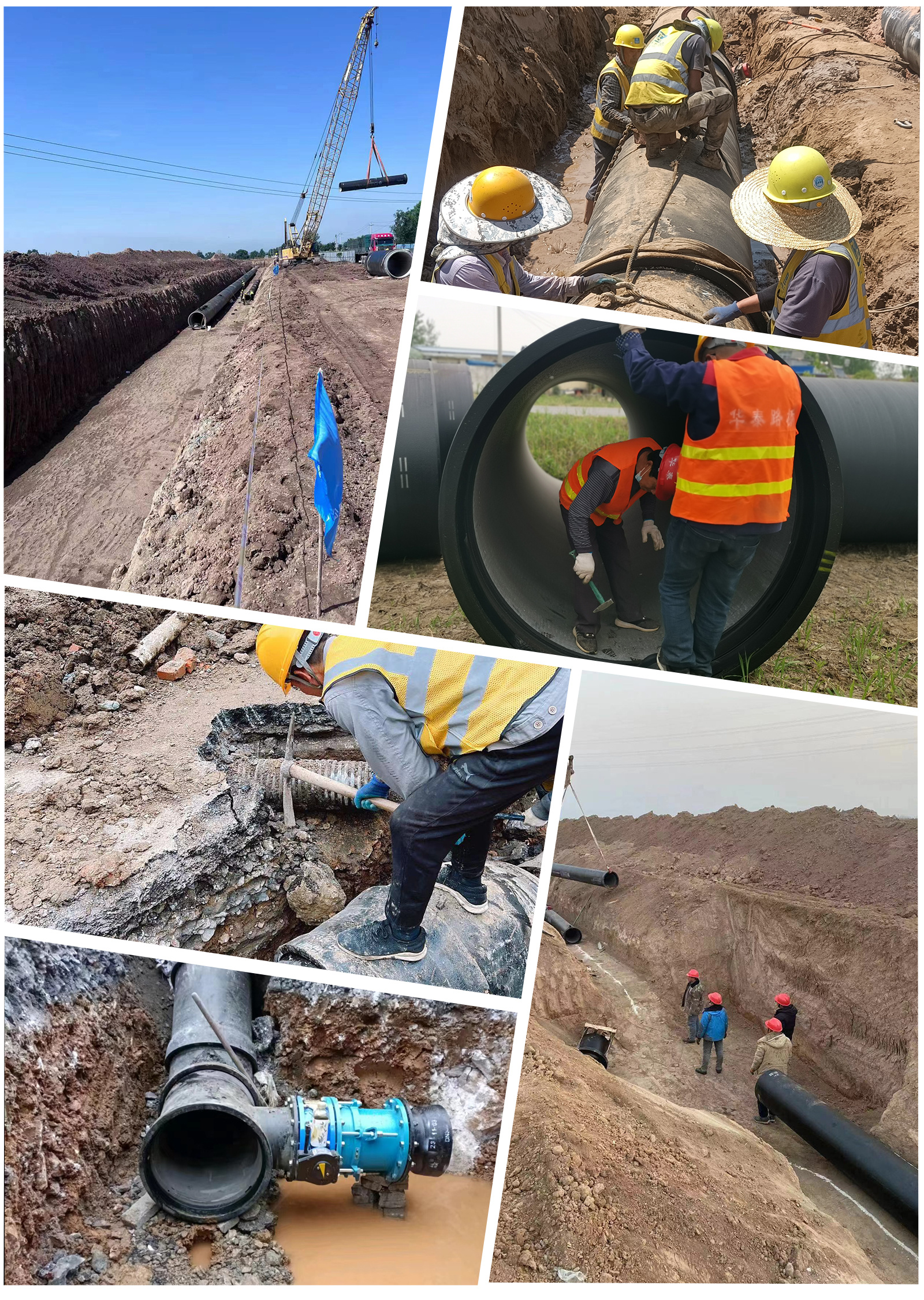
Exhibition Team
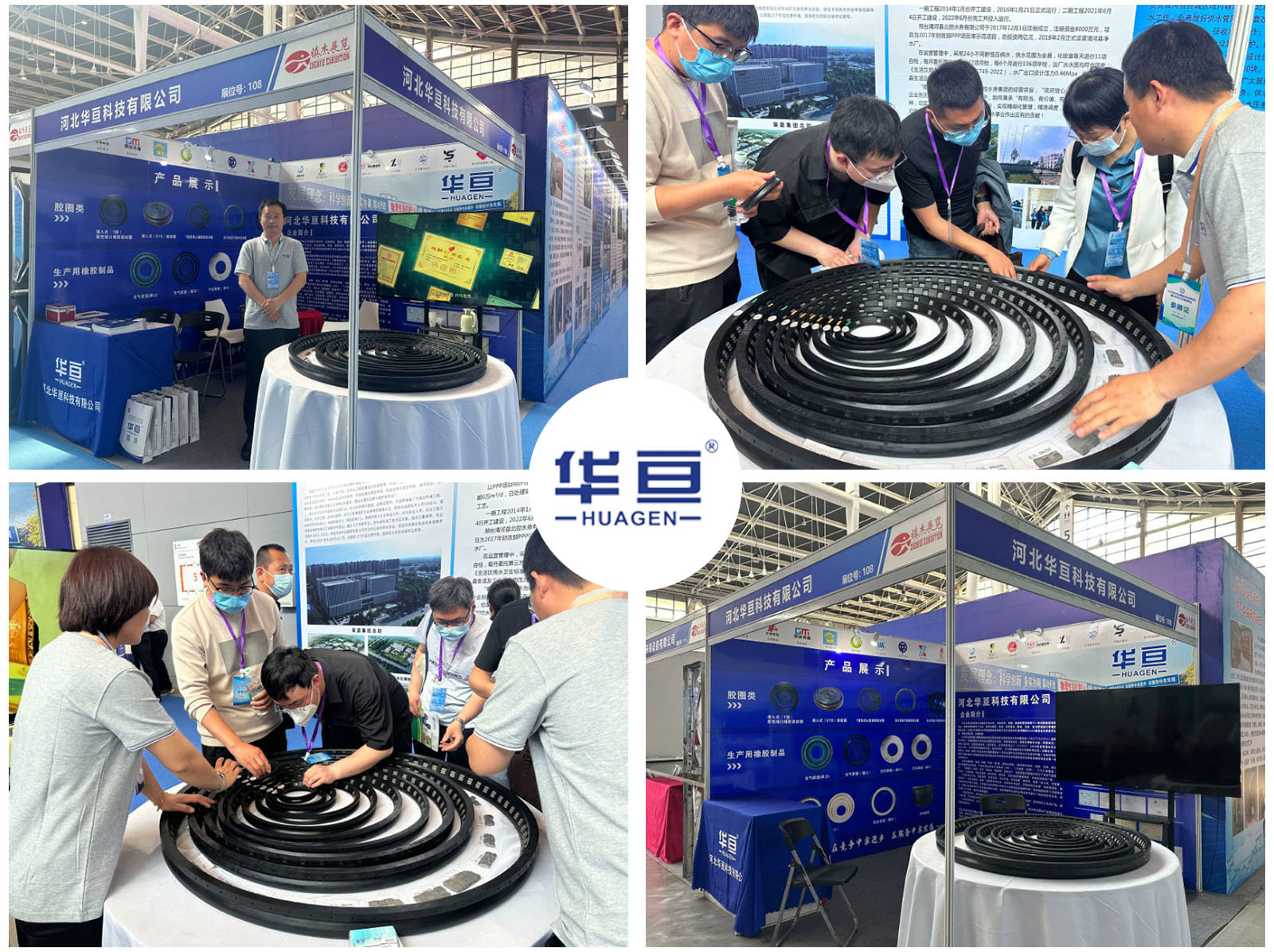
Logistics Delivery
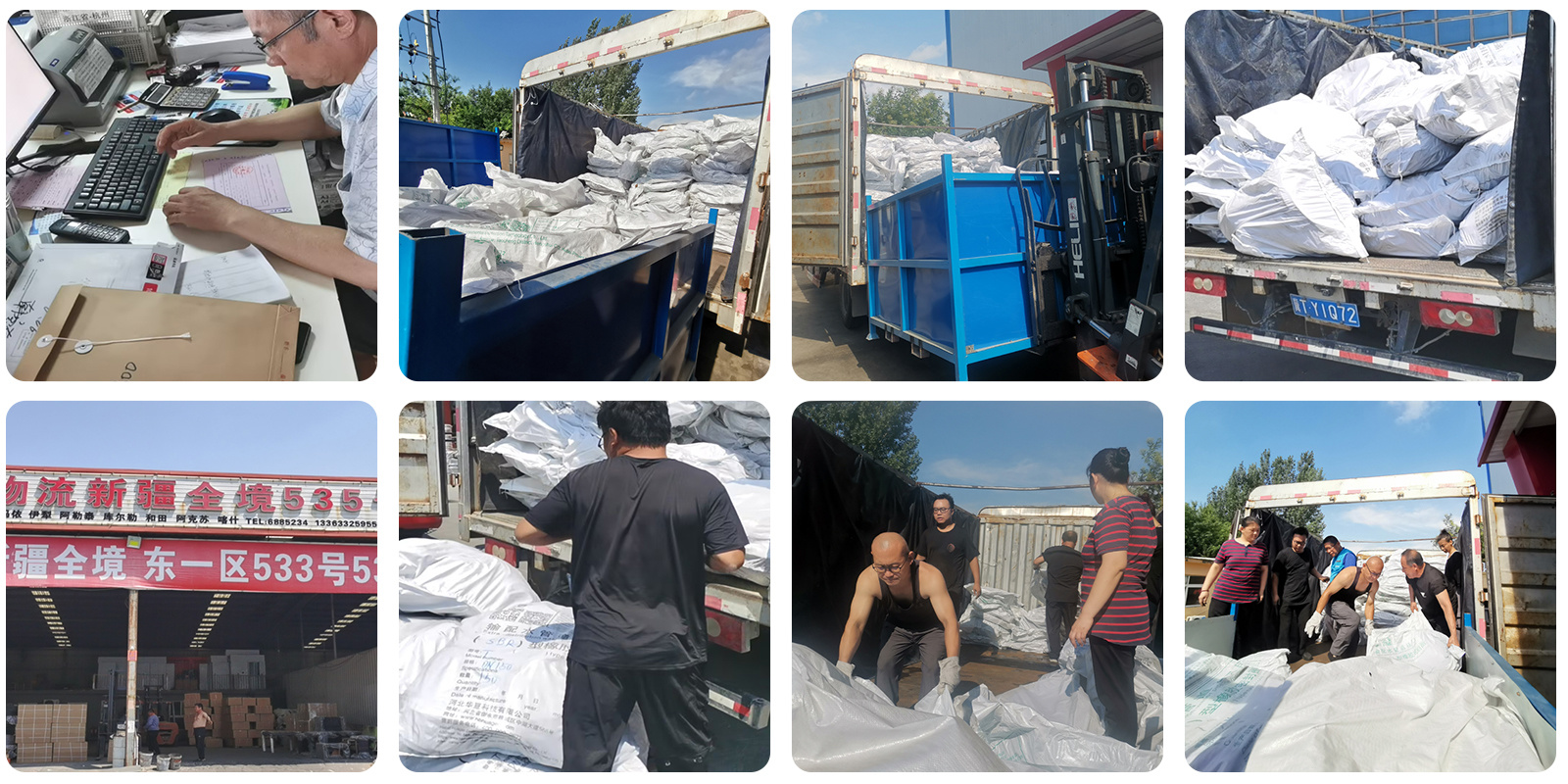
Factory Panorama
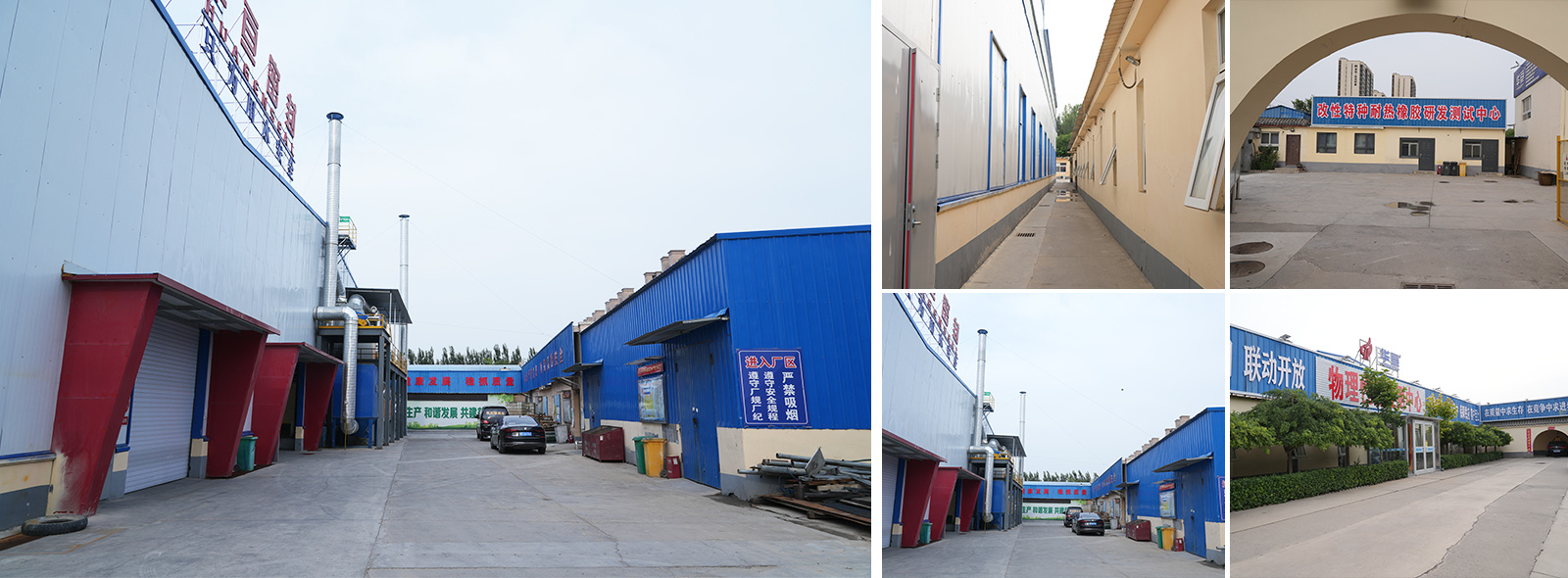
Application Scenarios
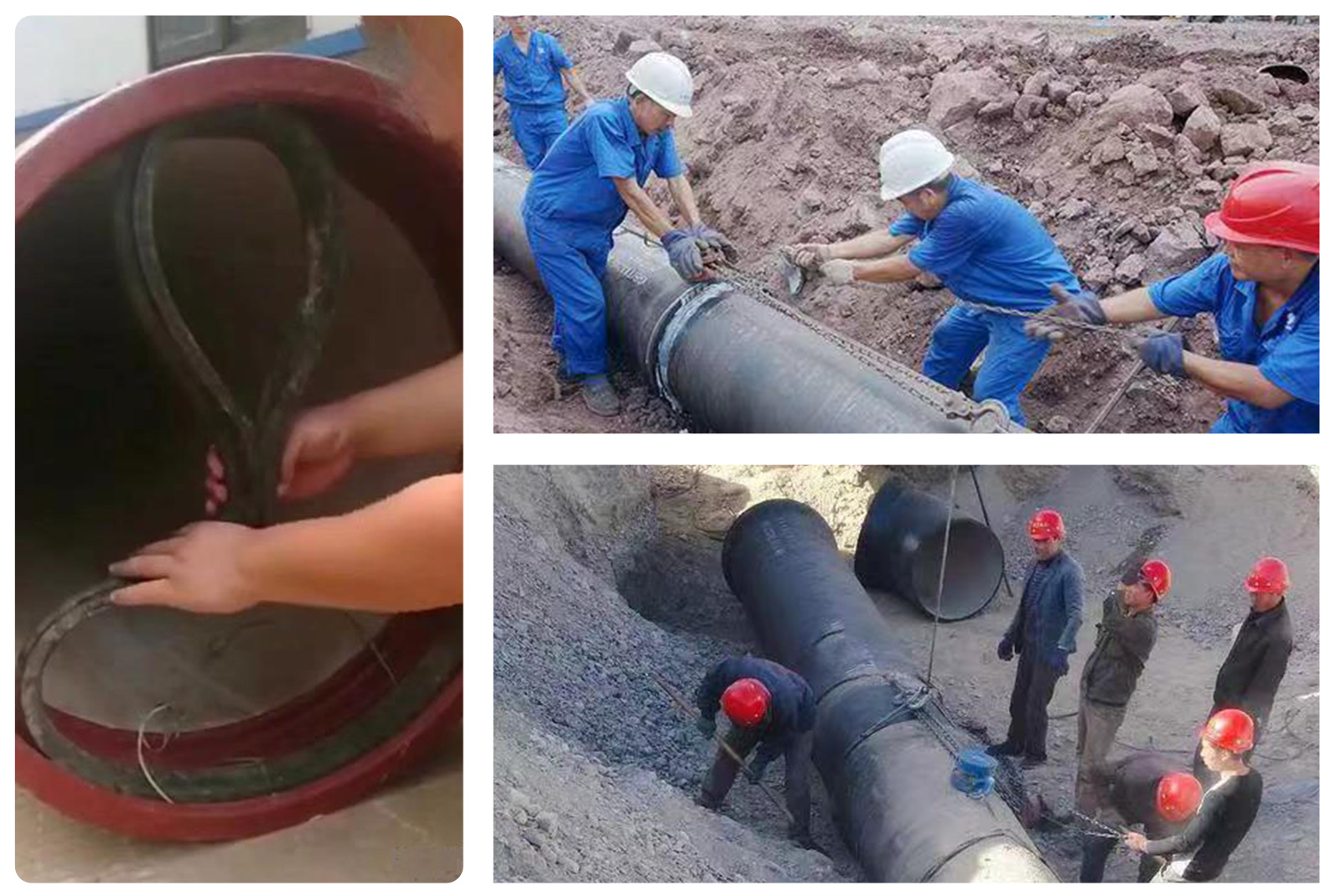
Common Problem
★ 1. Cracks and fractures: Rubber rings may experience cracks and fractures during use due to stress or aging.
The treatment method can be to repair or replace rubber rings with cracks and fractures. Rubber patches or glue can be used for reinforcement during repair.
★ 2. Deformation and hardening: Rubber rings may undergo deformation and hardening when used for a long time or exposed to external environments such as high temperatures and chemicals.
The solution can be to replace the deformed and hardened rubber rings. In addition, appropriate maintenance measures can be taken, such as avoiding exposure to extreme temperatures and using suitable lubricants, to extend the service life of the rubber ring.
★ 3. Corrosion and aging: Rubber rings can experience corrosion and aging after prolonged use or exposure to corrosive effects such as chemicals and oxygen.
The solution can be to replace the rubber rings that have corrosion and aging. In addition, appropriate maintenance measures can be taken, such as storing in a dry, cool, and well ventilated environment, to extend the service life of the rubber ring.
★ 4. Friction damage: Rubber rings may experience friction damage when in contact or friction with other hard objects.
The treatment method can be to repair or replace the rubber ring with friction damage. Rubber patches or glue can be used for repair.
Keyword:
Get A Quote
Note: Please leave your email address, our professionals will contact you as soon as possible!








